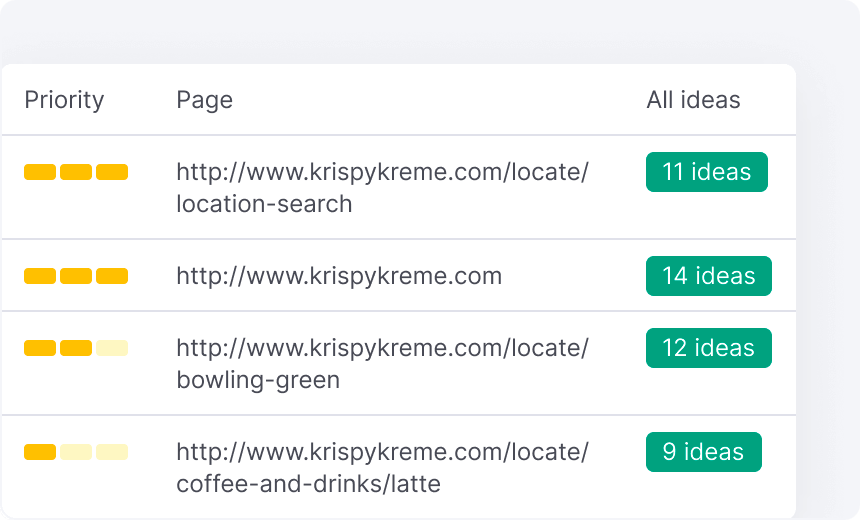Unveiling the Unconventional Mediums in Google Analytics Beyond Default Setups
In the realm of digital analytics, Google Analytics stands as a keystone for businesses looking for to recognize their on-line visibility. By venturing past the surface area and delving into the intricacies of social media information, e-mail campaign performance, referral website traffic resources, straight website traffic patterns, and custom-made network collections, a treasure chest of details waits for those willing to accept a much more nuanced technique.

Leveraging Social Network Insights
Periodically ignored, yet tremendously useful, is the practice of leveraging social networks insights within the realm of Google Analytics. By incorporating information from platforms like Facebook, Twitter, Instagram, and LinkedIn right into Google Analytics, businesses can get a much deeper understanding of their audience and the efficiency of their social media sites campaigns.
With this assimilation, marketers can assess and track user habits on their internet site that originates from social networks systems. They can recognize which social media channels are driving one of the most traffic, which web content is reverberating with the audience, and which campaigns are converting the most leads. This understanding enables data-driven decisions to enhance social networks approaches and boost overall marketing performance.
Moreover, by incorporating social media sites understandings with Google Analytics, businesses can produce much more targeted and customized projects - what is not considered a default medium in google analytics. They can utilize market details, passions, and on-line actions collected from social media sites to improve their target market division and provide customized messages that reverberate with details consumer teams. This targeted approach can lead to higher interaction, boosted conversions, and inevitably, boosted return on investment
Discovering Email Project Performance
Uncovering Email Project Efficiency includes examining crucial metrics and performance indicators to evaluate the performance of e-mail advertising efforts. When diving right into email campaign efficiency, it is crucial to analyze metrics such as open prices, click-through rates, conversion prices, and unsubscribe prices. Open prices show the portion of recipients that opened up the email, providing understanding into the effectiveness of subject lines and sender names. Click-through prices determine the percentage of recipients who clicked web links within the email, revealing involvement degrees. Conversion rates track the percentage of receivers that completed a desired activity after clicking on a link in the e-mail, such as signing or making a purchase up for an e-newsletter. Unsubscribe prices highlight the number of recipients who chose out of receiving more e-mails, dropping light on email material quality and relevance. By evaluating these metrics, online marketers can adjust their email advocate much better involvement and performance.
Studying Reference Website Traffic Sources
After assessing the efficiency of e-mail projects via key metrics such as open rates and conversion rates, the next vital action is assessing referral traffic sources in Google Analytics to understand where site visitors are originating from and exactly how they engage with the website. Reference website traffic resources describe the websites that route customers to your website with clickable web links. By delving into this data, businesses can gain understandings right into which outside platforms are driving web traffic to their site, whether it be social networks platforms, partner internet sites, or on-line directory sites.
Assessing reference website traffic can provide valuable information on the effectiveness of exterior marketing initiatives and collaborations. It aids organizations recognize high-performing reference resources that add dramatically to internet site web traffic and conversions. By understanding the actions of site visitors coming from different referral resources, companies can customize their advertising and marketing techniques to optimize involvement and conversions. Google Analytics provides detailed records on referral website traffic, allowing organizations to track the performance of each referral source properly and make data-driven decisions to boost their on the internet visibility.
Discovering Straight Traffic Patterns
Checking out the straight website traffic patterns in Google Analytics gives important understandings right into customer behavior and the effectiveness of campaigns - what is not considered a default medium in google analytics. Direct web traffic describes site visitors that come down on a website by directly typing the URL into their web browser, making use of book marks, or clicking untagged web links. Recognizing direct traffic patterns can help online marketers assess the impact of my link offline marketing efforts, brand recognition, and the performance of word-of-mouth references
By diving right into straight website traffic information, organizations can reveal crucial information concerning customer intent and brand name loyalty. Examining the habits of direct visitors, such as the pages they go to, the time invested in site, and the conversion price, can provide a much deeper understanding of customer interaction like it and the general efficiency of the website in transforming site visitors into customers.
In addition, tracking straight web traffic patterns over time permits services to identify fads, seasonality impacts, and the success of particular projects or promos in driving direct visits. This details can then be made use of to fine-tune marketing strategies, enhance website web content, and improve the total individual experience to optimize conversions.
Using Custom Channel Groupings
Using personalized channel collections in Google Analytics permits businesses to categorize and assess their internet site traffic based on certain standards, providing useful understandings for enhancing advertising and marketing strategies. Custom-made network collections make it possible for business to create their very own personalized groups of web traffic resources, such as social networks, natural search, email projects, and referral website traffic. By defining these groups, businesses can get a much deeper understanding of how various marketing networks contribute to their website traffic and conversions.
This feature is especially valuable for businesses with varied advertising and marketing techniques throughout Website various platforms. As an example, a company running both paid and organic social networks projects can differentiate between the two to examine their specific efficiency accurately. Furthermore, customized channel collections can assist recognize any kind of overlooked or ignored web traffic sources that may be driving important interaction.
Final Thought

By venturing past the surface and diving into the ins and outs of social media data, email project performance, recommendation traffic resources, straight web traffic patterns, and personalized channel collections, a prize trove of details awaits those eager to embrace a much more nuanced strategy. They can identify which social media networks are driving the most traffic, which content is reverberating with the target market, and which campaigns are transforming the most leads.After reviewing the performance of email projects via key metrics such as open rates and conversion rates, the following critical step is examining reference website traffic sources in Google Analytics to understand where site site visitors are coming from and just how they interact with the site. Customized channel collections allow firms to develop their very own tailored groupings of traffic sources, such as social media, organic search, email campaigns, and recommendation web traffic. By leveraging social media understandings, discovering e-mail project efficiency, assessing reference website traffic resources, exploring direct web traffic patterns, and using custom-made network collections, marketing professionals can obtain beneficial understandings right into their online visibility.